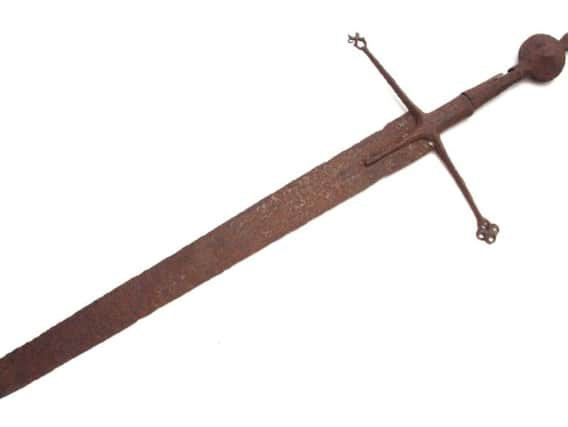Rusty 500-year-old Highland sword stuns auction house with £30,000 sale


The item, which also has a broken tip, was sold at an auction house in Skipton, Yorkshire, after the seller found it in the garage of his late father.
It was sold by Hutchinson Scott auctioneers with the new owner, who is from Canada, entering into a tense bidding war on the phone with another potential buyer in the room.
Advertisement
Hide AdAdvertisement
Hide AdThe Canadian took the sword after the bidder in the room folding his offer at £29,000.
Paul Macdonald, sword maker and master-at-arms at Macdonald Armouries in Edinburgh, who was interested in buying the item to make a replica, said the sale was "unbelievable".
He said: "I thought I might get a bargain and I was prepared to go up a bit. I was surprised when it went up to , £6,000 and then £7,000. But, really I am glad that it has gone for a price that reflects its true value.
"Clearly, its significance has been recognised and you can only hope that it has gone to a good home and that it will be looked after."
Mr Macdonald said he had seen three or four other swords of this type with the weapons held in the National Museum of Ireland in Dublin.
He said the sword was used by West Highlander members of the 'gallowglass', or the elite mercenary warriors from Scotland who were employed to defend Irish chieftains from the 13th to 16th Century.
Mr Macdonald said the slender, long sword that was sold at auction was a 'very distinctive' weapon.
"These swords were incredibly light, and incredibly fast," Mr Macdonald added.
Advertisement
Hide AdAdvertisement
Hide AdThe auction house said that the 'pitted condition' of the sword meant it was likely it had been buried, submerged or exposed to the elements for many years.
While replica swords are not uncommon, only few genuine 15th or 16th century swords survive with most displayed in ancestral collections or major museums. Very few come up for auction.
The sword is now in London and is due to be shipped to Canada in the near future, with the new owner paying a 20 per cent buyer's premium on top of the £30,000 sale price.
